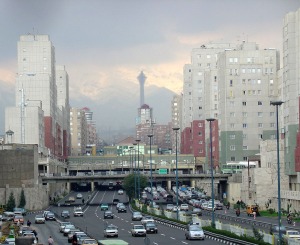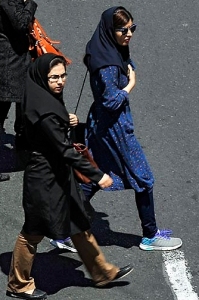Contrary to what this blog might make you think, I’ve got a diverse variety of cultural interests, and very rarely, they do intersect. For example, there are certain kinds of hip-hop I like listening to. Generally, it can be classified as “East Coast” (that’s of the US). I analyzed it for a long time to understand why it appeals to me and most other hip-hop/rap makes me cringe…then I understood that it has to do with the environment it was composed in. Generally, East Coast hip-hop comes from urban and fast-paced neighborhoods, rather than the more rural and relaxed locales of the South and West, and high-rise “project” environments, not the separate houses and/or townhouse complexes of the South and West. I understand it because (and I am going to omit the majority of details here) I once lived in a neighborhood like this. In a different part of the world, the majority of people were and, to a large content, still are forced to live like this, and the end result is the same as what happens on the East Coast. Some of those songs gave me a shock because they brought back memories that I did not go back to for MANY years.
The city I live in now also boasts a variety of such neighborhoods, and there are 2-3 of them in which conditions are very similar to where I grew up (obviously slightly better than what occurs in many countries, but, as you will see, it’s hard to tell with so many lies being spread). Our media love to despise them and constantly write propaganda pieces that everyone living there is to be pitied at best and a “subhuman” at worst. Many people in my city believe this and dread to enter these neighborhoods because they think someone will rob or kill them! Well, I have met some people from there, and I can tell you that some of the most amazing people I have ever met in my life came from these neighborhoods. Partially because they are exposed to so much negativity, they need to put 150% of themselves into their work to survive it and to succeed, unlike people in a more “normal” neighborhood. They have an incredible work ethic, and they have an incredible understanding of human nature, which they express highly openly and sometimes in a bit “in-your-face” way, which is misunderstood by many. Thanks to those people, I can come to terms with myself and my own experiences and feel more confident about things that tended to weigh me down and depress me.
So what does this have to do with the blog? Well, once, I read that even in Tehran, there is actually such a neighborhood that was also built like an urban renewal project. This neighborhood is called Navab and is located in downtown Tehran. It used to consist of old-style low-rise houses, which were demolished and replaced with huge concrete high-rise apartment blocks. A highway cuts the neighborhood in two, and multiple pedestrian bridges are built to connect the two sides. The picture below, taken on a smoggy day, shows the rather bleak nature of the neighborhood.
Many of the urban renewal problems typical to these developments apparently plague Navab too, although I have tried finding more information and could not find much. There are no lengthy memoirs about life there, unlike with the Northern neighborhoods, and only a few scholarly articles mention in passing the “crumbling infrastructure” and “drug, crime and safety issues”. I am still kicking myself a bit that I didn’t save a photo set I saw once that showed neighborhood efforts to beautify the concrete blocks of Navab by painting beautiful murals on the walls. (Incredibly enough, that neighborhood in my city I talked about above is doing EXACTLY the same thing – there are murals and street art installations everywhere!) A bit strangely, I could not find any underground hip-hop from Navab area, although it would be the kind of place this music would organically fit and in which the social problems could be addressed through this music. Another interesting note is that Navab was the site of some of the most determined and violent Green Movement protests in 2009 and again in 2011, and there is a lot of anti-regime anger there, although it is not a rich neighborhood.
Finally, we get to the clothing…here it is, a lovely photo of manteau fashion from Navab. These girls are probably students (there are many universities just steps away from this neighborhood), judging by the snoods, but not necessarily. The girl on the left has a more typical ‘student” outfit, only instead of jeans or black pants, she wears beige pants. The girl on the right is wearing a blue patterned dress manteau over skinny pants and her snood seems to be a shade more navy blue than black. I really like her facial expression, though her eyes are hidden behind sunglasses. Somehow, she reminds me of some amazing people I knew – so open yet so mysterious.


Navab is not a very poor neighborhood, it is a low-middle to middle class neighborhood.
Navab is also located at the west of Tehran, not the downtown.
The south of Tehran is poor and working class ,it is also one of IRI base of support.
West of Tehran is mostly middle class and new jumped ups, so it is not very pro IRI and seen lots of clashes in 2009.
East of Tehran is mostly middle and low middle class, it is also one of the most religious parts of Tehran, they were the vanguards of the revolution in 79(see black friday and IIAF base uprising in 79), for this reason it is pro IRI and most military personnel live in it.